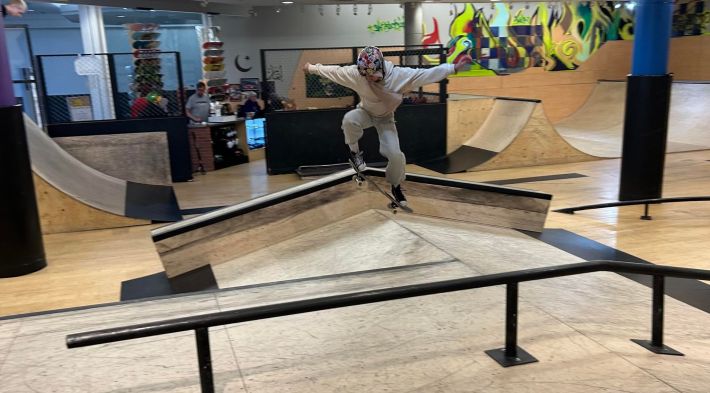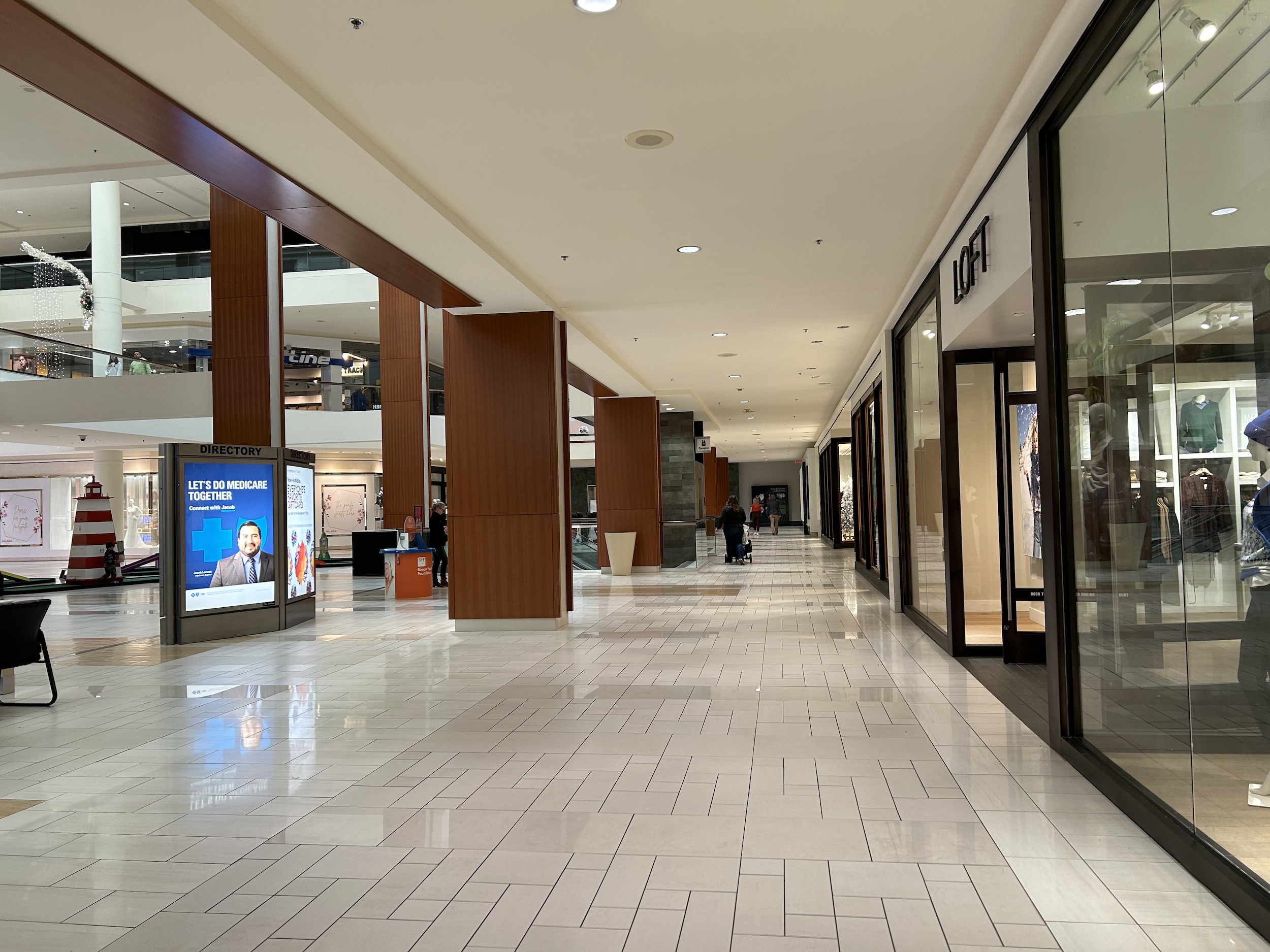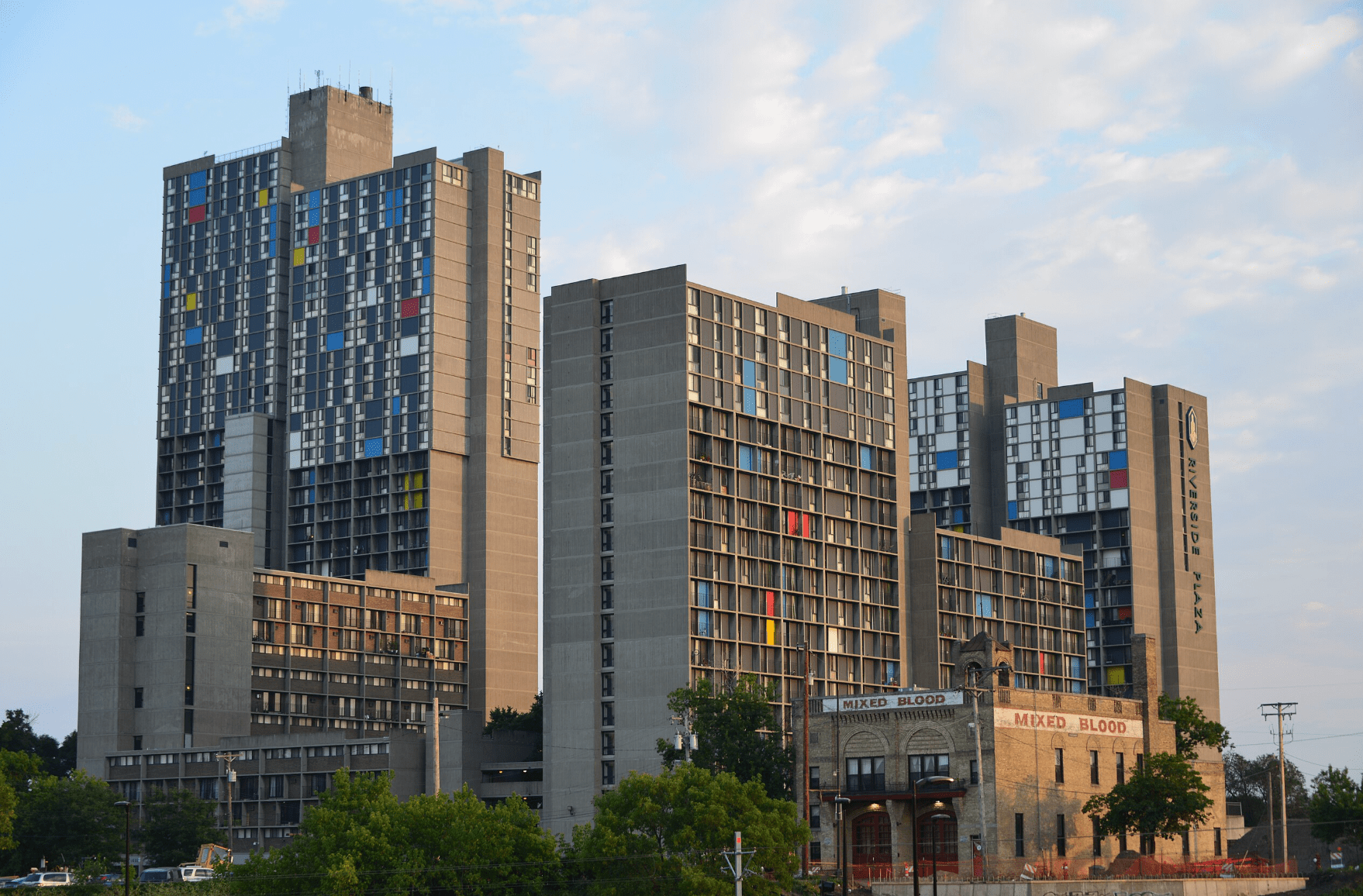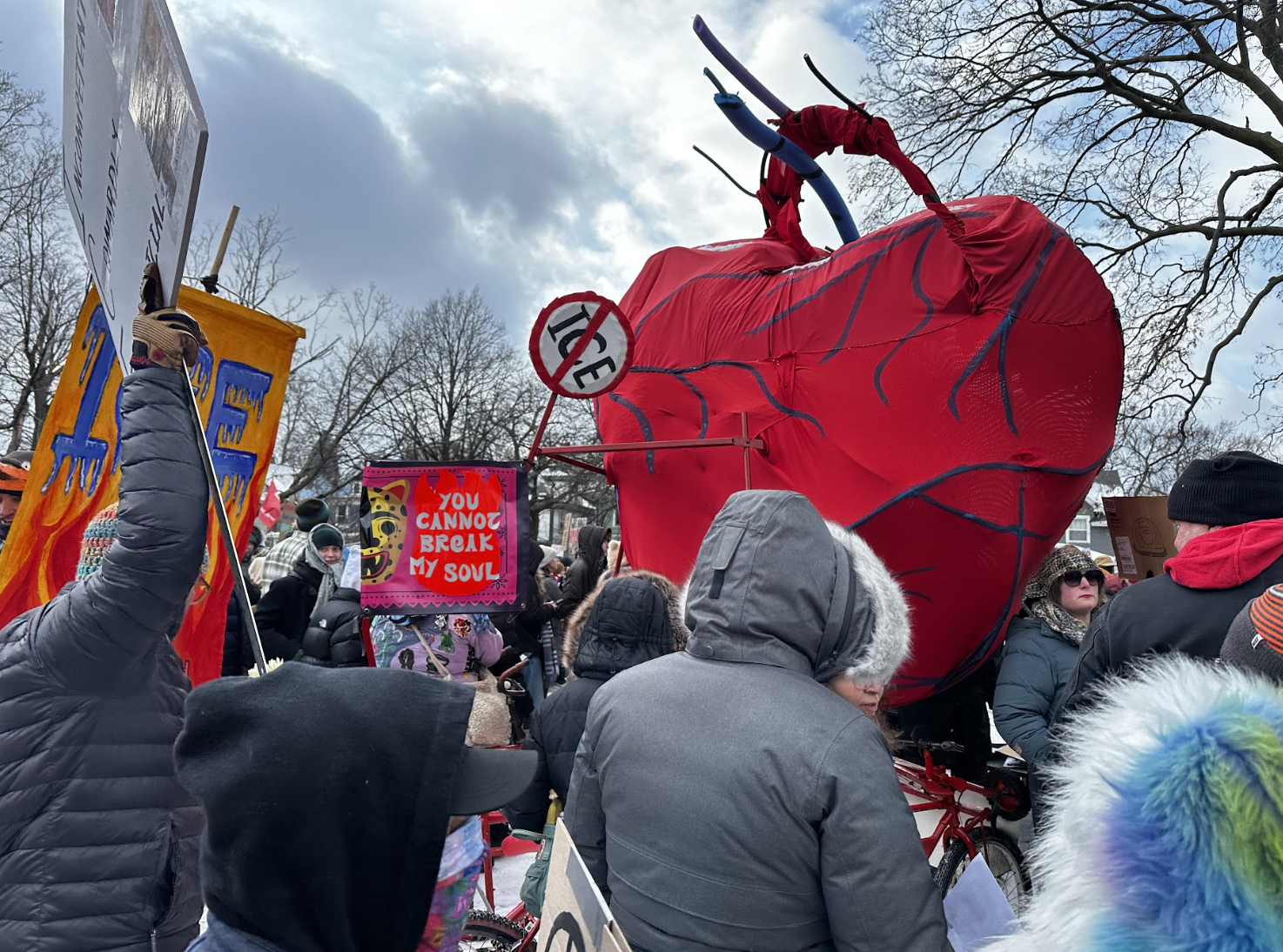It’s the holiday season, and I’ve decided to visit Southdale Center in Edina, America’s first indoor mall. I’m expecting Christmas crowds, but inside it’s eerily quiet. My boots squeak on the marble floor, echoing off the walls as I shuffle down an empty hall. There’s no flow of shoppers making their way from store to store, no shrieking children in the play area, and only faint Muzak from unseen speakers.
I pass by a small water fountain that smells of chlorine, but I doubt those are freshly wished-upon pennies sitting at the bottom. I’m not in a mall; I’m in a museum, a time capsule from the ’00s.
Most American shopping centers aren’t what they once were. For Gen-X teens, the mall wasn't just for buying stuff—it was a lively social spot, the epicenter of hanging out with friends. (You’ve seen Mallrats, right?) A few decades later, department stores, once crucial mall anchors, are leaving empty spaces that now sometimes attract urban explorers, not shoppers.
But while some malls struggle others are flourishing. What makes them different? It all comes down to evolution.
In the 1950s, malls were revolutionary. They came into existence just as suburban development began booming, drawing people away from denser downtown areas where housing, community centers, and shopping were all central.
And through the decades, things continued to look good for malls. According to Alexandre Lange, author of Meet Me by the Fountain, American malls reached peak popularity in the 1990s, with about 140 malls being built each year around the country, contributing to a grand sum of about 2,000. But by 2007, the rate of new malls being built per year had hit zero. There are about 700 enclosed U.S. malls operating right now, a number that’s expected to drop to 150 by 2030.
“There is going to be this huge die off,” Lange predicted on the podcast 99% Invisible. “I don’t think it’s going away—I mean, [that’s] still a lot of malls. Many of those are the big marquee malls in their towns, so the richest malls are surviving… But department stores are no longer the arbiters of taste that they used to be.”
And that's as true in the Twin Cities metro as it is anywhere, with malls like Southdale, Har Mar, and Maplewood struggling to find tenants and fill spaces.
Beyond changing habits and the rise of internet shopping, there’s also the question of the third space, a term coined by author Ray Oldenburg in the ’80s to describe how the majority of a person’s life is spent in three places: the home, the workplace, and a third public social setting. Twenty years ago, third spaces included public libraries, barbershops, churches, bars, and, of course, the mall. Forty years later we’re still hanging out at bars, but malls? Not so much.
“The nature of the third place is one in which the presence of the ‘regular’ is always welcome, although never required,” he writes in Celebrating the Third Place. “Membership is a simple, fluid process of frequent social contact, renewed each time by choice of the people involved. Eventually, social bonds develop through a type of informal intimacy.”
Post-pandemic, it’s harder to spot where the third space has moved—or even if it still exists. When it comes to American malls, what was once a third space may now be a liminal space; empty shells with unsettling yet transfixing vibes.
“It feels like you’re in a video game app, a game that was long abandoned by its players but still allows you to walk abound,” YouTuber Collin Aronson narrates in the video above. “Without that life, it just feels incomplete.”
He’s not talking about the Metaverse; he’s making his way through an empty mall IRL and recording himself. With nearly 13,000 subscribers, Aronson travels to struggling shopping centers across the nation and shares what he finds via his channel, NorthCdogg2. In his videos, he gives tours of malls in their current state, and includes a bit of history, from ownership sales to major population shifts in the surrounding areas. He’s not the only one documenting the downfall of malls. These days dead mall voyeurism is a whole cottage industry, with videos sometimes racking up hundreds of thousands of views.
“They’re all just very outdated,” Aronson says of what the ghost malls he visits have in common. He explains that when malls lose their big-name, big-footprint stores, often they don’t replace them with anything. And once a mall loses one major store, it tends to lose another, and another, creating a domino effect. There’s not much budget left for renovations when a place is struggling just to retain tenants.
That’s certainly his take on Burnsville Center; at about 270,000 views, his trip through that mall is the subject of one of Aronson’s most popular videos. Around the time he visited, in September 2023, the mall's occupancy was estimated at around 50%.
“This was a mall for its people, and it helped shape a community,” he says. “Love it or hate it, Burnsville Center was a mall that fought to the very end.”
But it’s not just about aesthetics. Aronson believes mall offerings have grown outdated as well.
“What malls need to do is to diversify from the old formula of just a bunch of shops,” he says. “Bring in entertainment, food—a whole mix of things. Look at the MOA, they have a theme park in the center.”
Over a billion people have visited the Mall of America since it opened in 1992, and they’re not just there to shop at the two Claire's on top of each other. There’s a hotel attached to the mall, a movie theater on the top floor, an aquarium below, and Nickelodeon Universe, formerly occupied by Camp Snoopy until 2008, is a major draw for kids and families. There’s an M Health Fairview clinic inside, a putt-putt course, Rick Bronson’s comedy club, and an office tower with work spaces. The mall also hosts special events, including F1RST Wrestling matches, nationally touring experiential art installations like Wink World, and last Halloween’s haunted trail, Onionhead’s Revenge.
MOA is one of several malls in town adding offerings beyond Hot Topic. With over 10 million guests annually, Rosedale Center contains VR and arcade businesses; wooed tenants like Rose & Loon, a shop that focuses on handmade items from Great Plains makers; and hosts a variety of happenings, from art installations to to drag shows. Ridgedale Mall plans to add a Kowalski’s supermarket and a community park/garden to its space, and the Galleria in Edina has been known to organize posh fashion parties, free fitness classes, huge floral art installations, and local artist exhibitions. And Southdale is showing signs of life after a choppy decade or so: In June of 2023 investors announced the mall would soon add apartments, a Kowalski’s, and new luxury-brand tenants.
A mall’s public perception can also impact the public’s likelihood to visit.
“I’ve seen so many people comment ‘It’s a crummy place’ and ‘It’s a terrible area,’” Aronson says of reactions to his Burnsville Center video. “But when I was doing the research for the video, I didn’t really find anything about how it’s in a bad area. What I saw was this community that is struggling with this giant shopping center and they don’t know what to do with it.”
And Burnsville Center isn’t dead yet; it’s in the chrysalis stage. Based in Minnesota and Chicago, realty investment firm Wyn Group has been buying up parts of the mall since 2022. Now Marshall Nguyen, Wyn’s founder/CEO, has teamed up with broker Stas Manchik to tackle a big question: What’s the best way to transform a 1 million-square-foot mall?
Like Aronson and Lange, Nguyen sees malls as spaces that need to evolve into multi-use facilities that offer a variety of experiences. That means bringing in a specialty grocery store, building apartments where unused parking ramps once loomed, diversifying entertainment offerings, and renovating existing spaces.
“When it comes to apparel and retail it's such a shaky industry, but people still need that brick and mortar,” Nguyen says. “We also want to bring in a lot of things that drive traffic: a grocery store that drives traffic, entertainment that drives traffic, indoor sports that draw a lot of traffic, and tournaments.”
Before Wyn, Nguyen worked at Caspian Group, where he helped transform the Gander Mountain outdoors store in Eden Prairie into the popular Asia Mall. Now Nguyen says a large Asian supermarket is being built in the former Gordmans space at Burnsville Center—a $30 million project—and a food hall will boast offerings like boba tea vendors, a wine wall, beer on tap, and space for industrial kitchens.
They’re also working on refreshing the aesthetics of the building, which originally opened in 1977. They’ve swapped out bathroom countertops with white marble, and the carpet on the second-floor will be ripped out and replaced with hard flooring. “It’s a 1980s look, right? We’re gonna update it,” Nguyen jokes. Burnsville investors are certainly game to try new things. Last March, SkaterApolis, a full-blown skate park filled with rails, ramps, and half pipes, opened in a second-floor space once occupied by the Gap.
“It was really challenging finding a space; I had pretty much given up,” SkaterApolis owner Mark Somerville told Racket last year. “Then my wife said I should go talk to the mall… The first day we opened we had like 80 people who came just to check it out.”

“[Local businesses] have been amazingly excited," Nguyen says. "I think it’s so cool to have people say, ‘Hey you know what? I’m so happy that you guys bought the mall because you’re local.' There’s so many memories tied to this place.”
While that nostalgia could initially draw crowds to a renovated Burnsville Center, it can’t sustain commercial viability alone. That’s where events come in, like Tết Nguyên Đán (Vietnamese New Year). The mall’s celebration brought in a reported 1,500-2,000 revelers on the last weekend of January.
Once critical of Burnsville Center’s future, Aronson says he has “high hopes” for the mall. “It’s a densely populated area,” he says, “and a nice community spot.”
People are social creatures, after all, and we’ll always need that third space, even if we’ve moved past what that meant in the 1990s.
“It’s so weird to see in the media that malls were so big in the ’80s and ’90s, but now they seem like a thing of the past,” Aronson says. “But I think malls could easily, very much become the go-to place again if we were able to work them in the right ways.”







